When it comes to the competitive world of compact SUVs, the Suzuki Vitara and the Toyota RAV4 stand out as two noteworthy options. Both vehicles blend practicality, performance, and innovation, catering to a diverse audience. In this in-depth comparison, we’ll explore the technical specifications, innovations, and overall driving experience each model offers.
Suzuki Vitara vs Toyota RAV4 – Which model is better for everyday use?
Both models have their strengths – but which one suits you more?
Compare performance, efficiency, price and space directly: Suzuki Vitara or Toyota RAV4?
Design and Dimensions
The Suzuki Vitara has a compact footprint, measuring 4185 mm in length, 1775 mm in width, and 1595 mm in height. This makes it easily maneuverable in urban settings while providing ample space for passengers and cargo. With a trunk capacity of 375 liters, it strikes a balance between size and utility.
On the other hand, the Toyota RAV4 is noticeably larger, measuring 4600 mm long, 1855 mm wide, and 1685 mm high. Its more substantial trunk capacity of 580 liters further emphasizes its versatility, making the RAV4 a better option for families or those hauling larger loads.
Engine Specifications
The engine choices for the Suzuki Vitara include petrol options with mild hybrid technology and a full hybrid variant. The power ranges from 116 to 129 HP, with a 1.4-liter engine being the most efficient, achieving 5.3 L/100km. The Vitara offers both front-wheel drive and all-wheel drive configurations, providing versatility depending on driver needs.
The Toyota RAV4, on the other hand, boasts a more powerful engine lineup, including full and plug-in hybrid options, with power outputs reaching up to 306 HP. Its 2.5-liter engine, coupled with an e-CVT transmission, provides a fuel efficiency starting at 5.6 L/100km, making it a strong contender for those who prioritize power without compromising mileage.
Performance and Acceleration
In terms of acceleration, the Suzuki Vitara can go from 0 to 100 km/h in approximately 9.5 seconds for its most powerful variant. This performance is adequate for daily driving needs, but may feel a bit underwhelming for those seeking a sportier experience.
The RAV4 significantly outperforms in this area, with models capable of 0-100 km/h times as low as 6 seconds. This acceleration, paired with a top speed of 180 km/h, makes it a more thrilling choice for drivers who value performance.
Innovations and Technologies
Both vehicles incorporate modern technologies to enhance safety and convenience. The Suzuki Vitara features a suite of safety systems under its “Suzuki Safety Support” umbrella, which includes adaptive cruise control, lane departure warning, and automatic emergency braking.
The Toyota RAV4, however, takes the lead with its Toyota Safety Sense, providing advanced driver-assistance systems such as adaptive cruise control, lane tracing assist, and a pre-collision system that enhances overall safety perception. The RAV4 also offers a superior infotainment system that includes a larger touchscreen and more connectivity options.
Comfort and Interior Quality
Inside, the Suzuki Vitara presents a comfortable cabin with quality materials and useful features, maintaining a user-friendly layout. However, it tends to have a more utilitarian feel compared to the RAV4.
The Toyota RAV4 offers a more premium atmosphere, with higher-quality materials and advanced infotainment technology. The spacious interior is complemented by comfortable seating and a well-thought-out layout, making it an excellent choice for long journeys.
Final Verdict
In conclusion, both the Suzuki Vitara and Toyota RAV4 bring unique strengths to the table. The Vitara is ideal for urban drivers seeking efficiency and compactness, whereas the RAV4 delivers performance and comfort, with advanced features that cater to families and adventure-seekers alike. When deciding between these two models, potential buyers should consider their specific needs regarding space, engine performance, and desired technology features.
Here’s where it gets real: The technical differences in detail
Costs and Efficiency:
When it comes to price and running costs, the biggest differences usually appear. This is often where you see which car fits your budget better in the long run.
Suzuki Vitara has a significantly advantage in terms of price – it starts at 23600 £, while the Toyota RAV4 costs 35100 £. That’s a price difference of around 11563 £.
Fuel consumption also shows a difference: Toyota RAV4 manages with 1 L and is therefore clearly more efficient than the Suzuki Vitara with 5 L. The difference is about 4 L per 100 km.
Engine and Performance:
Under the bonnet, it becomes clear which model is tuned for sportiness and which one takes the lead when you hit the accelerator.
When it comes to engine power, the Toyota RAV4 has a significantly edge – offering 306 HP compared to 129 HP. That’s roughly 177 HP more horsepower.
In acceleration from 0 to 100 km/h, the Toyota RAV4 is convincingly quicker – completing the sprint in 6 s, while the Suzuki Vitara takes 9.50 s. That’s about 3.50 s faster.
In terms of top speed, the Suzuki Vitara performs hardly perceptible better – reaching 190 km/h, while the Toyota RAV4 tops out at 180 km/h. The difference is around 10 km/h.
Space and Everyday Use:
Whether family car or daily driver – which one offers more room, flexibility and comfort?
Both vehicles offer seating for 5 people.
In curb weight, Suzuki Vitara is noticeable lighter – 1255 kg compared to 1745 kg. The difference is around 490 kg.
In terms of boot space, the Toyota RAV4 offers noticeable more room – 580 L compared to 375 L. That’s a difference of about 205 L.
In maximum load capacity, the Toyota RAV4 performs distinct better – up to 1690 L, which is about 570 L more than the Suzuki Vitara.
When it comes to payload, Toyota RAV4 distinct takes the win – 600 kg compared to 400 kg. That’s a difference of about 200 kg.
Who comes out on top?
Overall, the Toyota RAV4 shows itself to be is largely superior and secures the title of DriveDuel Champion.
It convinces with the more balanced overall package and proves to be the more versatile choice for everyday use.
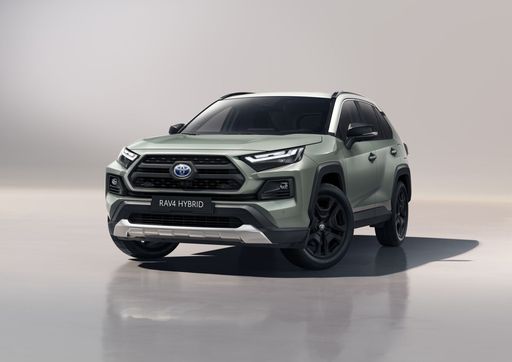 @ Toyota Motor Corporation
@ Toyota Motor Corporation
Toyota RAV4
Suzuki Vitara
The Vitara is a city-smart SUV with a cheeky streak of off-road promise, perfect for drivers who want practicality without pretense. It’s honest, easy to live with and surprisingly likeable, a sensible companion for everyday adventures and weekend escapes.
details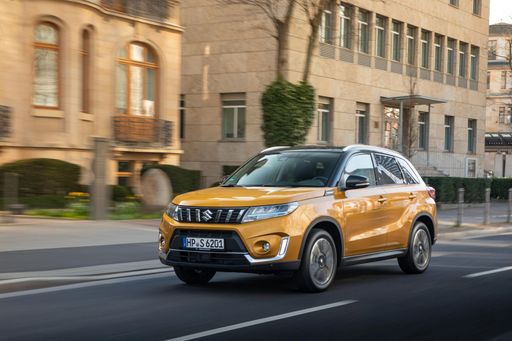 @ Suzuki Motor Corporation
@ Suzuki Motor Corporation
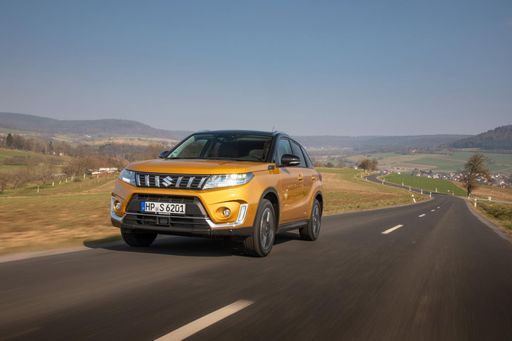 @ Suzuki Motor Corporation
@ Suzuki Motor Corporation
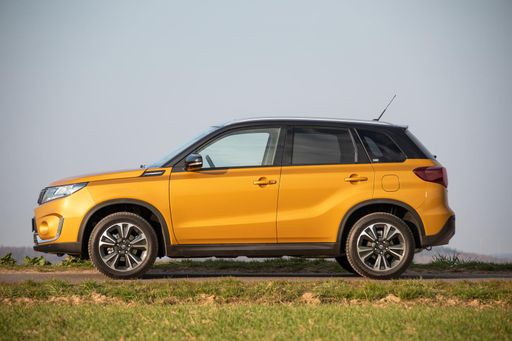 @ Suzuki Motor Corporation
@ Suzuki Motor Corporation
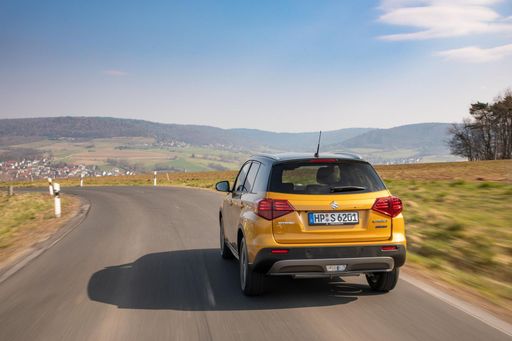 @ Suzuki Motor Corporation
@ Suzuki Motor Corporation
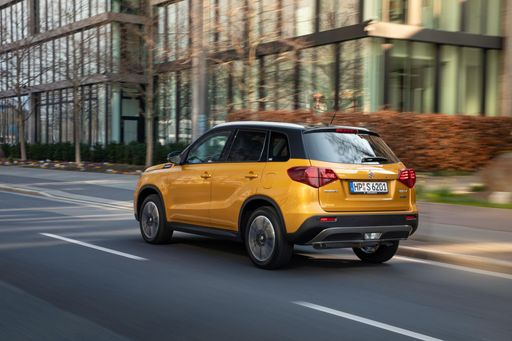 @ Suzuki Motor Corporation
@ Suzuki Motor Corporation
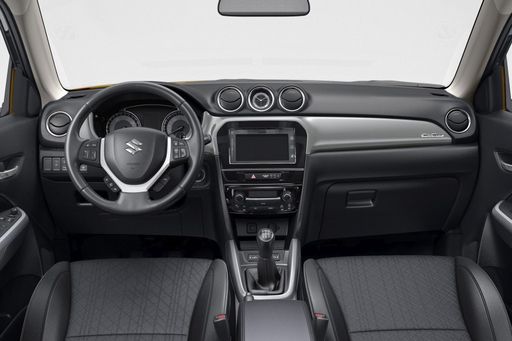 @ Suzuki Motor Corporation
@ Suzuki Motor Corporation
Toyota RAV4
The Toyota RAV4 feels like a sensible friend on the road, marrying dependable practicality with a dash of SUV personality that keeps daily driving from turning dull. Comfortable and easy to live with, it looks tough without shouting and quietly gets the job done — a sensible pick for buyers who want versatility without drama.
details @ Toyota Motor Corporation
@ Toyota Motor Corporation
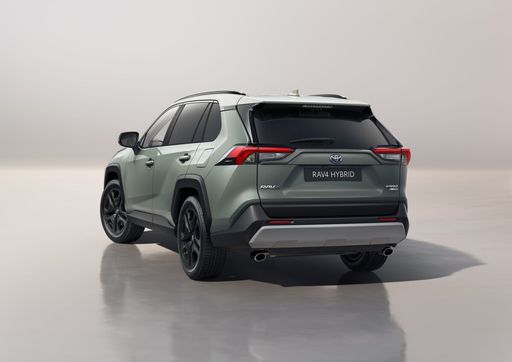 @ Toyota Motor Corporation
@ Toyota Motor Corporation
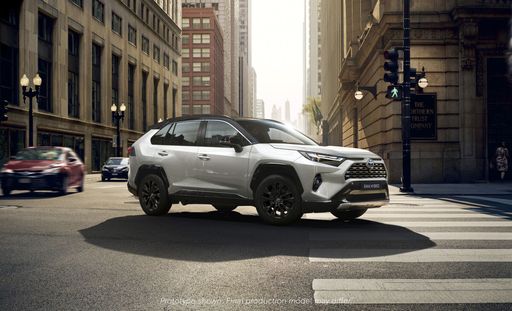 @ Toyota Motor Corporation
@ Toyota Motor Corporation
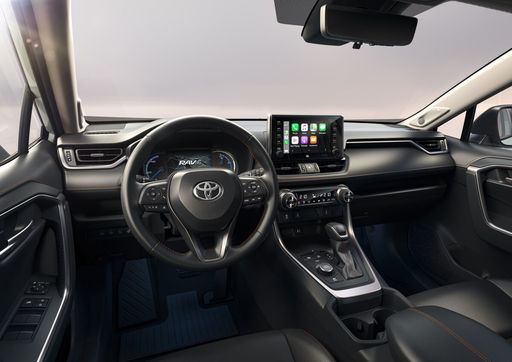 @ Toyota Motor Corporation
@ Toyota Motor Corporation
 @ Suzuki Motor Corporation
@ Suzuki Motor Corporation
|
 @ Toyota Motor Corporation
@ Toyota Motor Corporation
|
|
|
|
Costs and Consumption |
|
|---|---|
|
Price
23600 - 30900 £
|
Price
35100 - 55700 £
|
|
Consumption L/100km
5 - 5.9 L
|
Consumption L/100km
1 - 5.6 L
|
|
Consumption kWh/100km
-
|
Consumption kWh/100km
-
|
|
Electric Range
-
|
Electric Range
75 km
|
|
Battery Capacity
-
|
Battery Capacity
-
|
|
co2
113 - 138 g/km
|
co2
22 - 128 g/km
|
|
Fuel tank capacity
47 L
|
Fuel tank capacity
55 L
|
Dimensions and Body |
|
|---|---|
|
Body Type
SUV
|
Body Type
SUV
|
|
Seats
5
|
Seats
5
|
|
Doors
5
|
Doors
5
|
|
Curb weight
1255 - 1395 kg
|
Curb weight
1745 - 1910 kg
|
|
Trunk capacity
289 - 375 L
|
Trunk capacity
520 - 580 L
|
|
Length
4185 mm
|
Length
4600 mm
|
|
Width
1775 mm
|
Width
1855 mm
|
|
Height
1595 mm
|
Height
1685 mm
|
|
Max trunk capacity
1046 - 1120 L
|
Max trunk capacity
1604 - 1690 L
|
|
Payload
375 - 400 kg
|
Payload
390 - 600 kg
|
Engine and Performance |
|
|---|---|
|
Engine Type
Petrol MHEV, Full Hybrid
|
Engine Type
Full Hybrid, Plugin Hybrid
|
|
Transmission
Manuel, Automatic
|
Transmission
Automatic
|
|
Transmission Detail
Manual Gearbox, Automated Manual, Automatic Gearbox
|
Transmission Detail
CVT
|
|
Drive Type
Front-Wheel Drive, All-Wheel Drive
|
Drive Type
Front-Wheel Drive, All-Wheel Drive
|
|
Power HP
110 - 129 HP
|
Power HP
218 - 306 HP
|
|
Acceleration 0-100km/h
9.5 - 12.7 s
|
Acceleration 0-100km/h
6 - 8.4 s
|
|
Max Speed
180 - 190 km/h
|
Max Speed
180 km/h
|
|
Torque
235 Nm
|
Torque
-
|
|
Number of Cylinders
4
|
Number of Cylinders
4
|
|
Power kW
81 - 95 kW
|
Power kW
160 - 225 kW
|
|
Engine capacity
1373 - 1462 cm3
|
Engine capacity
2487 cm3
|
General |
|
|---|---|
|
Model Year
2024 - 2025
|
Model Year
2024 - 2025
|
|
CO2 Efficiency Class
D, C, E
|
CO2 Efficiency Class
D, B
|
|
Brand
Suzuki
|
Brand
Toyota
|
What drivetrain options does the Suzuki Vitara have?
Available configurations include Front-Wheel Drive or All-Wheel Drive.
The prices and data displayed are estimates based on German list prices and may vary by country. This information is not legally binding.
